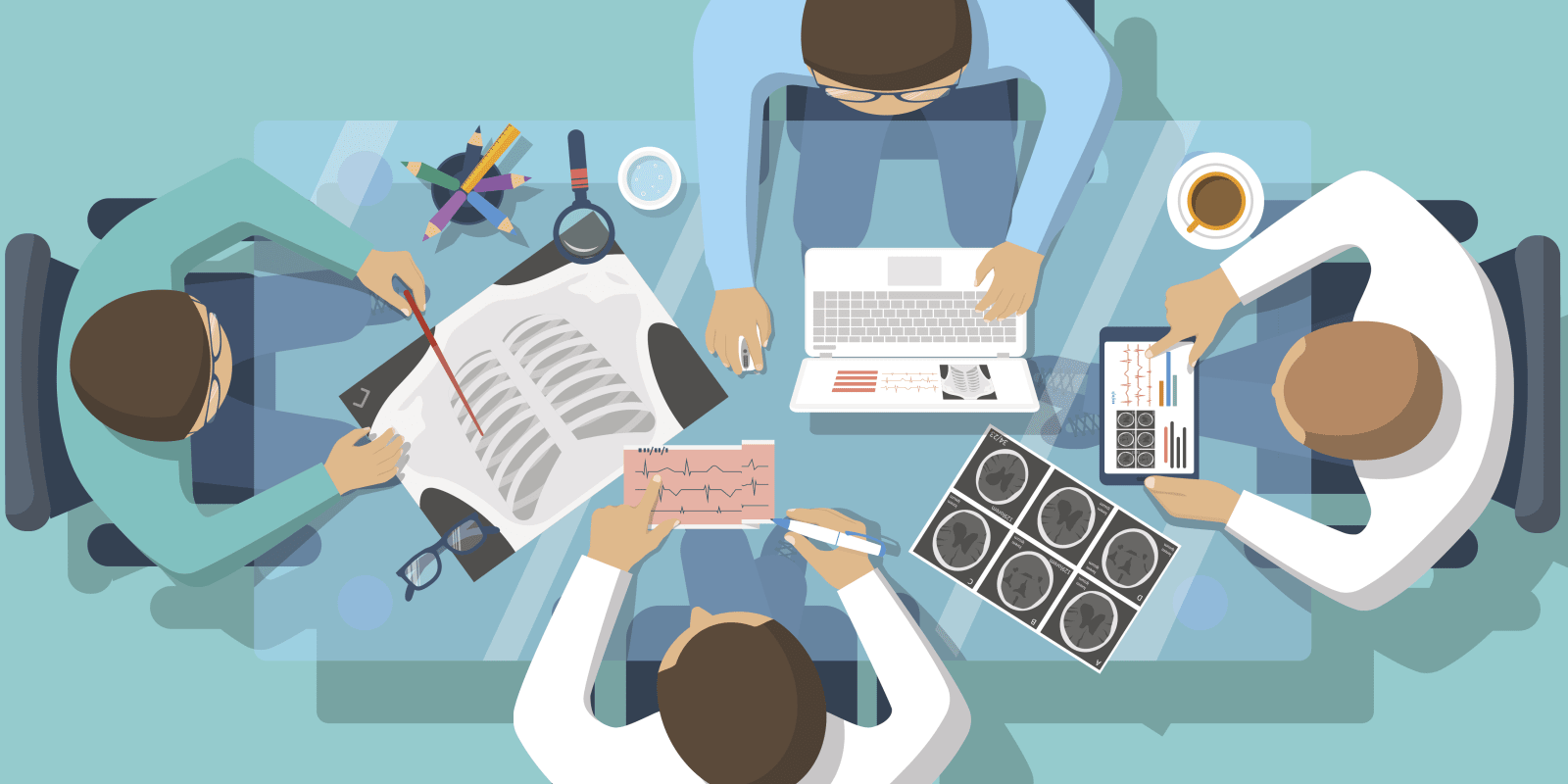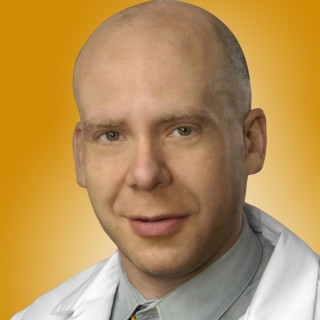
Great things are not done by impulse, but by a series of small things brought together. — Vincent van Gogh
Having attended the 2019 Radiological Society of North America’s (RSNA) annual meeting this past week at McCormick Place in Chicago — still the largest medical meeting in the world, held in the largest convention center in the world — I have a few new as well as additional observations from a relatively veteran academic radiologist’s perspective… and with a little help from my friends, in both academia and private practice, who also threw in their two cents here. As I told my three-year-old son, this is a "big big big BIG meeting!"
The "Virtual" vs. the "Physical" Meeting
This was my 27th RSNA meeting. Although I don’t have the official attendance records, it seemed — at least to me — that in-person attendance is now steady and stable, especially during the peak times of the meeting, despite the steady growth of the online meeting over the past several years. The virtual meeting, despite fears to the contrary, has not replaced or substantially attenuated the physical meeting. As a busy academic radiologist with a variety of interests and ongoing collaborative projects, more things happen, more brainstorming occurs, and more ideas and opportunities are launched in person, than would be possible if I was logging in and getting some CME in my PJs at home. True, it is certainly a relaxed learning environment participating remotely, without requiring travel, hotel, and other expenses, and without having to deal with the late November/early December typical Chicago weather. One can even ask questions of the moderators and speakers, if watching the virtual meeting live. Then again, no one knows that you want to collaborate if you are in your PJs at home.
Now, don’t get me wrong, the virtual meeting is fantastic for a variety of reasons. For one thing, my busy friends in academia and/or private practice can get a ton of top-of-the-line CME either live at home or at their convenience, and is very cost-effective if they are RSNA members. Now upwards of 80% of this mega-meeting is available online, and for up to five months following the meeting. Second, I can watch myself — or my wife can watch me and Monday morning quarterback what I did well and what I could have done better – as well as watch the work of well over a thousand of my colleagues (I believe there were more than 1,400 faculty presenters) speaking, and the work of many others in scientific and other sessions. Third, one can now look at the myriad of posters and the multiple cases of the day, during the meeting and then afterwards, using the meeting app and website. The virtual attendee (especially the time-challenged radiologist) can focus on a specific topic, or can review a broad range of topics, depending on her or his learning needs. Fourth, those who physically attended the meeting can earn further CME by watching presentations and learning from them well after the meeting, which were not possible to go to in person because of scheduling demands and conflicts. Fifth, I and many others can watch that "Hot Topics" session we wanted to attend — rather than at 7 in the morning — at our convenience, in our PJs, at 9 pm by the fireplace, sipping cocoa and/or schnapps.
Artificial Intelligence (AI) 2.0
Well, it seems that, like the reports of the death of Mark Twain being greatly exaggerated, the reports of the demise of the radiologist at the hands of IBM Watson/HAL, and others, still seems to be somewhat premature. I moderated a scientific session (coincidentally held just down the hallway from the growing “AI Showcase”) where the opening, award-winning trainee paper noted that an AI algorithm performed worse than did several first-year radiology residents with a little bit of training in identifying pneumothoraces on chest radiographs. The few times the computer did better – albeit doing it 1,000 times faster than the residents – but it probably wouldn’t have made much of a difference to patient clinical care, if used prospectively. So, we aren’t quite there yet, at least not for pneumothorax identification. The initial exploratory/proof of concept phase is transitioning into more sophisticated research, most of which, by its nature, is retrospective, but involving larger and larger data sets, and a variety of indications and applications, which is growing by leaps and bounds, and some of my colleagues are already using newer forms of AI for routine clinical work as per our conversations at the annual meeting, and likely most of us will be using AI routinely in the near future as well. The leap to tech can be seen in the launch of an RSNA online-only journal on AI, by AI papers in all of the RSNA journals, in many other medical imaging journals, and by a growing presence of AI at the meeting in a variety of forms.
Multiple newer companies, including Google/Alphabet, have joined the bandwagon. AI is here to stay, but, at the moment, seems to be more of a potential help than a threat, although concern and skepticism continue. Radiologists are not yet heading for the unemployment line, resident recruiting doesn’t appear to have been harmed, and AI may prove to be a very helpful “second reader,” as well as a workflow organizer and triage tool. So, hopefully, more Jetsons than HAL. Open the pod bay doors, HAL? I can’t do that, Dave. But I can help you find that subtle subsegmental pulmonary embolism…
I’m All About That Case, 'Bout That Case, No Trouble
Some of my favorite things to write and read over the years have been case reports. They are a great way to start one’s formal and peer-reviewed writing in academic medicine and academic radiology, and I have participated in many in my career, both in print and online. Yet as the emphasis has shifted in academic radiology and in academic medicine to high-impact journals and original research published in such journals, the case report has unfortunately become an endangered academic species. But a great case (and one personally hopes that when one becomes a patient that one also never becomes a "great case") provides an important teaching message, is interesting, and transcends the individual patient being reported.
In a somewhat unanticipated twist of events over the past decade, despite its near-demise in most major radiology journals, the case report has taken on a life of increasing importance at none other than the RSNA annual meeting itself, and most recently in a new RSNA online educational product. There is a growing number of case-based sessions, using audience response on personal electronic devices in conjunction with the RSNA’s software called “Diagnosis Live,” at the annual meeting. These sessions are held in the larger rooms at McCormick Place throughout the week, and are very well attended. At one point during the three-hour session I participated in, there were almost 1,500 people logged on live in the room, in addition to the people in the room not logged on, and the people not in the room who were watching the meeting virtually. additional people in the room not logged on, and with many people also watching the virtual meeting, live. This was the most fun I had at the meeting, and I can see why attendees love watching sessions filled with nothing but a series of great cases making teaching points.
Other parts of the meeting which involve case-based teaching are the already mentioned, very popular cases-of-the-day, and the digital online posters, both in multiple subspecialties. Last year I graded literally thousands of answers to two of the cases of the day in the emergency radiology section. And, at this meeting, the RSNA announced the launch of the Case Collections, which will be their online teaching file, and which will have a variety of purposes. For full disclosure, one of my colleagues will be running that initiative (Dr. Moshiri at the University of Washington), and I, with about nine others at the Deputy Editor level, will be helping her. I am excited to participate in this new important case-based project. So, the reports of the case report being dead, at least not at the annual meeting and in other educational initiatives by the RSNA, really are rather premature.
The Global Radiology Community
When I looked at my agenda for the RSNA annual meeting, I was particularly struck by the global nature of it, and I think this would not be that unusual if I compared my agenda to the agendas of some of my other mid-career to senior-level radiologist colleagues, whether based in North America or elsewhere. I had dinner with my Canadian long-term collaborator, and was joined by a U.S.-based radiologist from India. I met with the British. I met with the Japanese. I met with my European editors. Then I met with a junior attending radiologist who works in India, whom I am helping to mentor. The list goes on and on, without my really trying. The goal wasn’t to produce a map of the world with a large number of "I met with someone from there" gold stars – it’s the nature of academic radiology being a "team sport," which is increasingly global. I moderated a scientific session, with an Argentine radiologist, and then caught up at a lunch meeting with a Swiss radiologist, where we talked about VIP medicine. We all share somewhat similar challenges – increasing workload, increasing demands, keeping up with technology, and greater expectations – but it was also interesting to hear about the differences of practice around the globe.
As I told the audience at the end of our abdomen case-based session at the 2019 RSNA annual meeting, when my wife asked our three-year-old son why he wanted to be a doctor when he grew up, he replied “because I want to make people feel better.”. That should be our mantra. That’s why we went into medicine, to help people. All of those teaching and scientific sessions at the RSNA annual meeting ultimately aim to make us more knowledgeable and skilled radiologists, so that we can take better care of our patients. Vincent van Gogh also said that “a good picture is equivalent to a good deed.” As radiologists, that certainly can be, and should be, our mantra.
Douglas S. Katz, MD, FACR practices in Garden City, Long Island, New York, USA. He wants to say a big thank you to Drs. Rakesh Shah, Mariam Moshiri, and Robert Abbott for looking this piece over.







